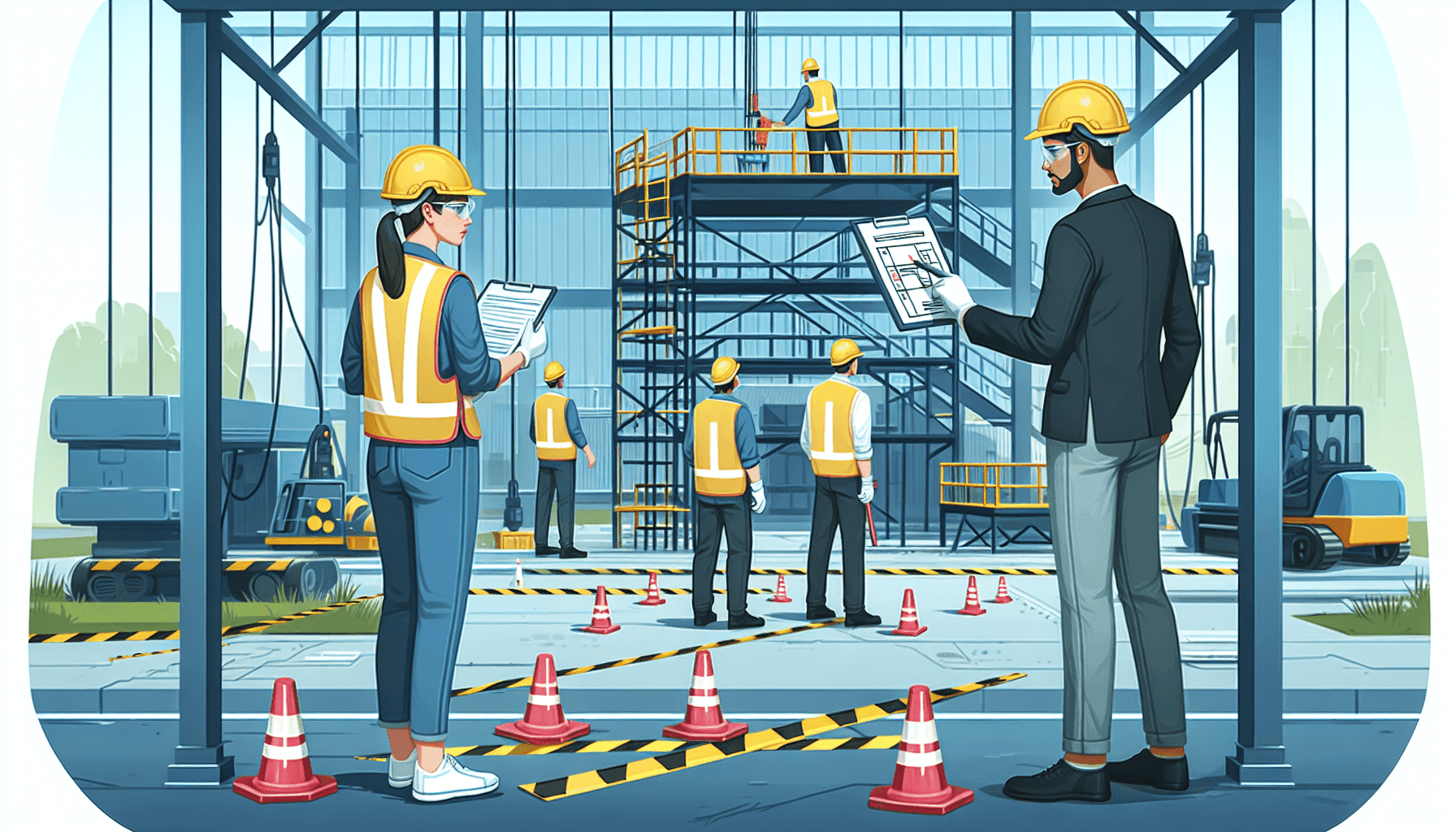When it comes to enhancing safety within a warehouse, it is crucial to conduct regular safety site assessments. These assessments help identify potential high-risk areas where accidents or incidents may occur. By proactively identifying and addressing these areas, warehouse managers can mitigate risks and create a safer working environment for their employees.
The Importance of Safety Site Assessments
A safety site assessment is a comprehensive evaluation of the overall safety conditions within a warehouse facility. It involves a thorough inspection of the physical layout, equipment, processes, and safety procedures in place. The goal is to identify any potential hazards, non-compliance with safety regulations, and areas that need improvement.
By conducting regular safety site assessments, warehouse managers can:
- Identify potential hazards and high-risk areas
- Improve compliance with safety regulations and standards
- Reduce the risk of accidents, injuries, and property damage
- Enhance employee safety and well-being
- Optimize operational efficiency by eliminating bottlenecks and inefficiencies
- Minimize downtime caused by accidents or incidents
Now that we understand the importance of safety site assessments, let’s explore some key steps to help identify high-risk areas during the assessment process.
1. Review Previous Incident Reports
One of the first steps in identifying high-risk areas during a safety site assessment is to review previous incident reports. Analyzing past accidents, injuries, and near misses can provide valuable insights into areas where safety measures may have failed or could be improved.
Warehouse managers should carefully examine incident reports to identify common trends or recurring incidents. For example, if there have been several forklift-related accidents in a specific area, it may indicate a need for improved safety protocols, such as additional signage, designated pathways for pedestrian traffic, or increased training for forklift operators.
2. Conduct a Walkthrough Inspection
A physical walkthrough inspection is an essential aspect of a safety site assessment. Warehouse managers should walk through the entire facility, paying close attention to potential high-risk areas. These may include areas with heavy machinery, elevated surfaces, low clearance, crowded aisles, or areas prone to spills or environmental hazards.
During the walkthrough inspection, it is important to consider the following:
- Observe the condition of the flooring, looking for any cracks, uneven surfaces, or slippery areas.
- Check the lighting conditions in all areas, ensuring proper illumination for clear visibility.
- Inspect the condition and maintenance of equipment, such as forklifts, conveyors, and storage racks.
- Assess the layout and organization of storage areas to identify any potential risks, such as overstacking or improper storage of hazardous materials.
Warehouse managers should also involve employees in the walkthrough inspection process. Employees often have valuable insights into potential hazards or areas that require attention. Encourage them to report any concerns or suggestions for improvement.
3. Review Safety Equipment and Procedures
Another critical aspect of a safety site assessment is reviewing the availability and condition of safety equipment and procedures. This includes personal protective equipment (PPE), emergency response plans, fire prevention measures, and evacuation protocols.
Warehouse managers should ensure that safety equipment, such as fire extinguishers, emergency exits, first aid kits, and safety showers, are accessible, properly maintained, and in good working condition. Additionally, they should review and update safety procedures and policies to align with industry best practices and regulatory requirements.
During the assessment, it is essential to check if employees are trained in the proper use of safety equipment and familiar with emergency response protocols. Regular employee training programs should be implemented to ensure everyone is informed and prepared to respond effectively in case of an emergency.
4. Analyze Workflows and Process Efficiency
Efficient workflows and optimized processes not only contribute to productivity but also play a vital role in safety. A safety site assessment should include a thorough analysis of workflows and process efficiency to identify any bottlenecks or areas that may pose risks to workers.
Warehouse managers should take into account factors such as the movement of goods, traffic flow, manual handling processes, and ergonomics. They should analyze if the current layout and equipment configuration are facilitating safe and efficient operations. Areas where workers have to bend, stretch, or lift heavy objects frequently may require ergonomic improvements to prevent strain or injury.
5. Seek Professional Guidance
While conducting a safety site assessment internally is a good starting point, seeking professional guidance can provide a more comprehensive evaluation. Warehouse optimization solution providers like HCO Innovations specialize in enhancing safety, productivity, efficiency, and cost-effectiveness within warehouse operations.
HCO Innovations offers warehouse safety evaluation services, helping warehouse managers identify high-risk areas and develop effective strategies to mitigate risks. Their expertise and experience can provide valuable insights and recommendations tailored to your specific warehouse needs.
By partnering with industry experts, warehouse managers can gain a fresh perspective and access to advanced technologies and solutions to ensure the highest level of safety within their facility.
Conclusion
Identifying high-risk areas during a safety site assessment is vital for maintaining a safe and secure warehouse environment. By reviewing incident reports, conducting walkthrough inspections, reviewing safety equipment and procedures, analyzing workflows, and seeking professional guidance, warehouse managers can proactively address potential hazards and improve overall safety.
Remember, safety should always be a top priority. Regular safety site assessments, coupled with continuous improvement efforts, will help create a culture of safety within your warehouse and protect your most valuable assets, your employees.

